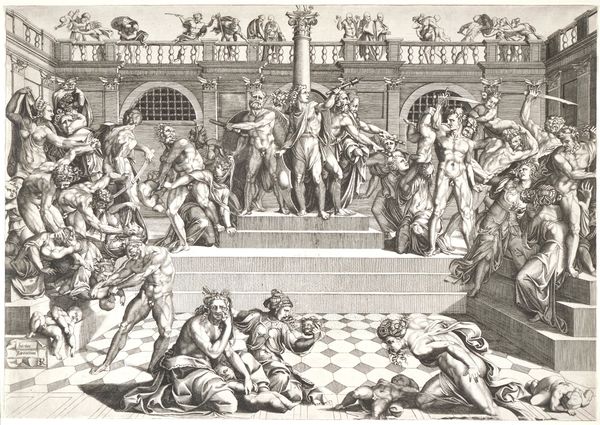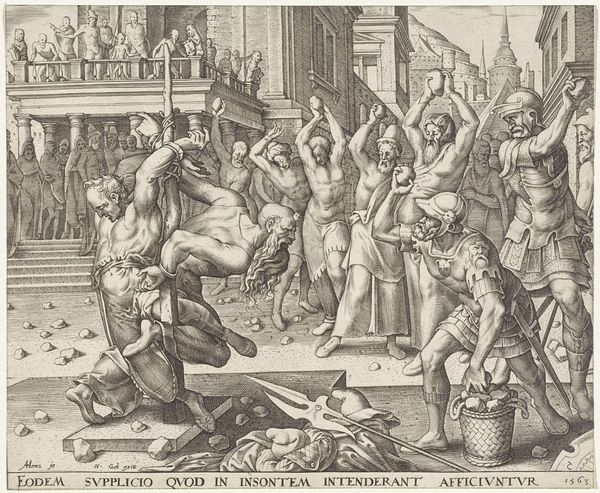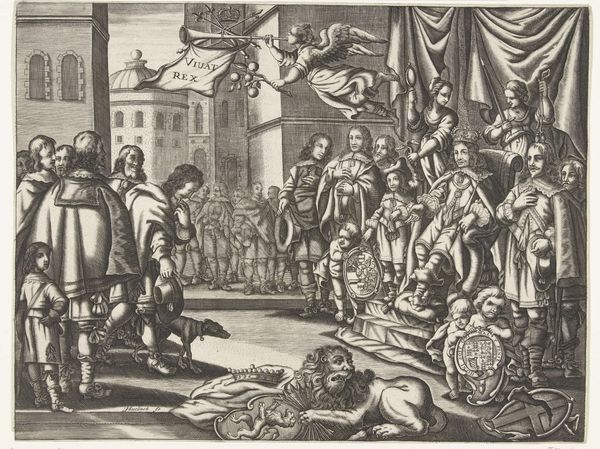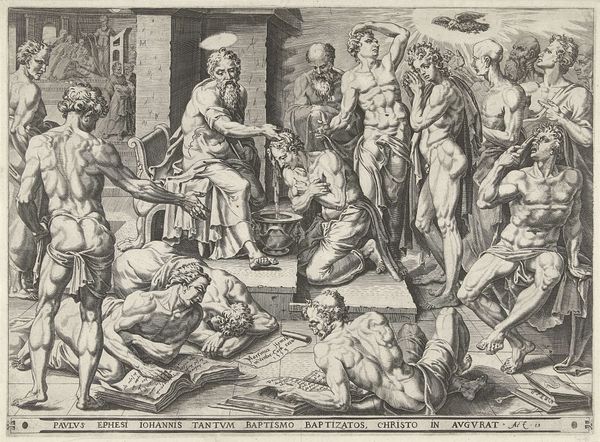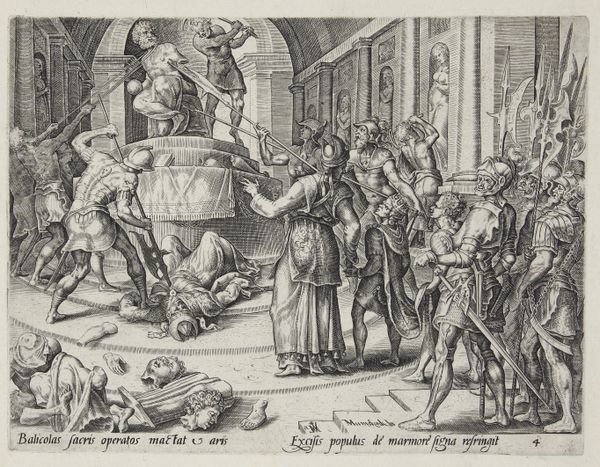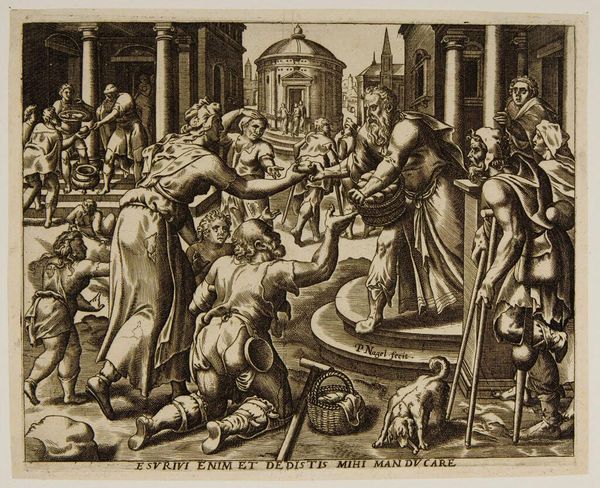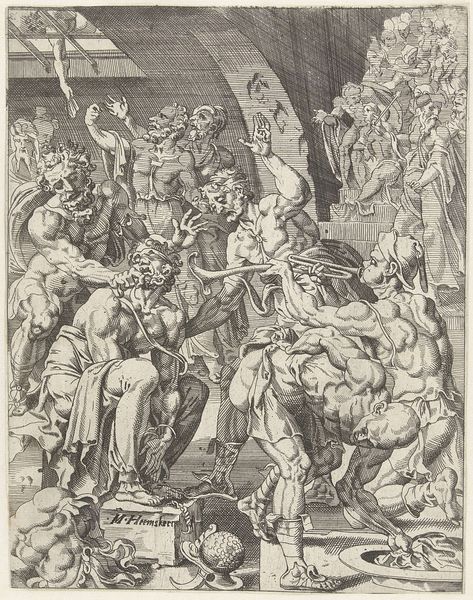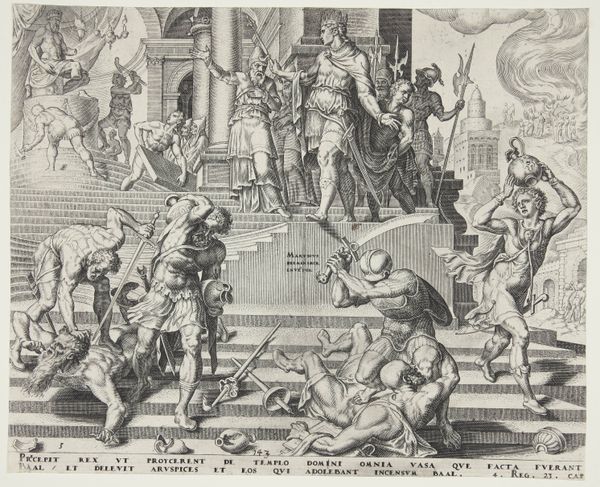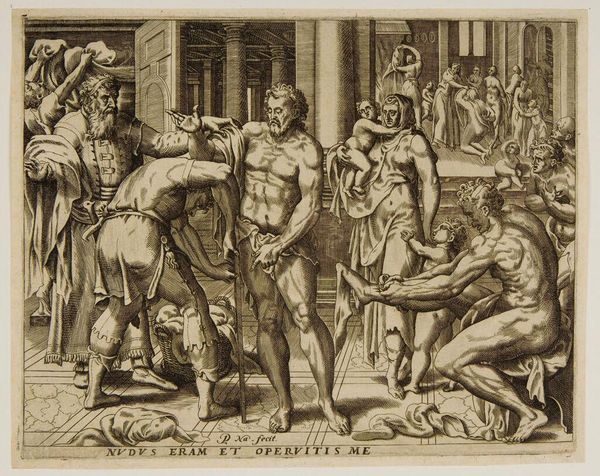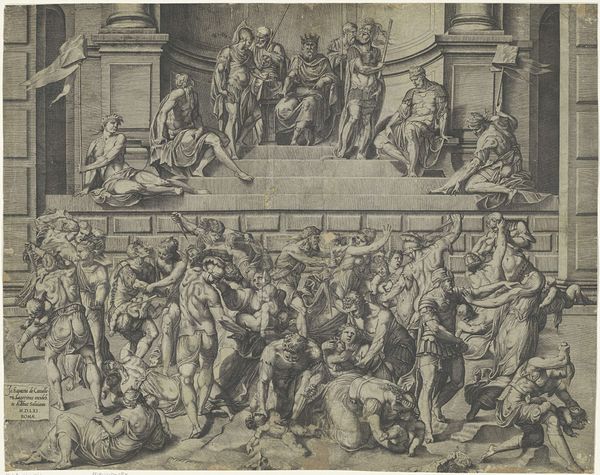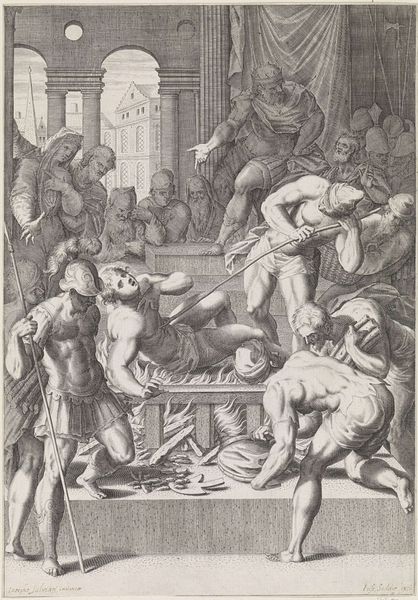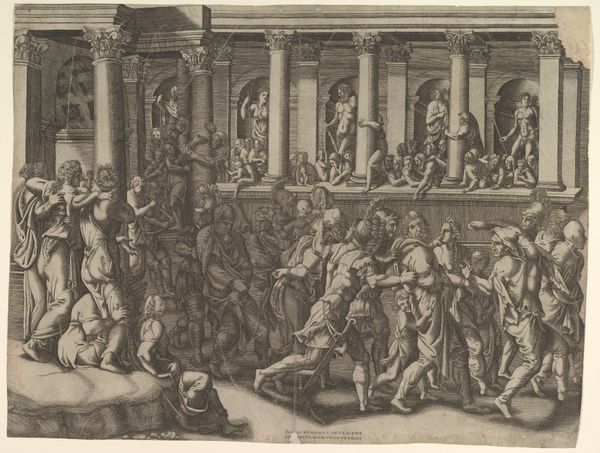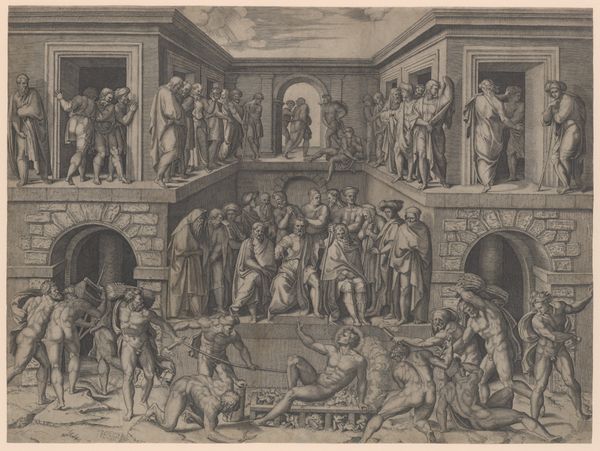
drawing, print, paper, graphite, engraving
#
drawing
#
narrative-art
# print
#
classical-realism
#
figuration
#
paper
#
graphite
#
history-painting
#
academic-art
#
graphite
#
engraving
Dimensions: 372 × 570 mm
Copyright: Public Domain
Editor: Here we have “The Massacre of the Innocents,” an undated engraving on paper by Nicolas Beatrizet, now at the Art Institute of Chicago. The sheer number of figures crammed into the composition is overwhelming. How should we interpret this chaotic scene? Curator: The title immediately gives us a vital historical context. We know that this print depicts the biblical story of King Herod ordering the execution of all young male children in Bethlehem. Beatrizet likely aimed to capture the horror, but more than that, he seems interested in portraying an idealized view of historical violence within a classicizing framework. Do you see how the figures, even in their distress, adopt poses reminiscent of classical sculpture? Editor: Yes, the figures do strike very dramatic and posed stances! It's interesting that even amidst such brutal violence, there's a sense of staged artistry, almost like a historical drama playing out. Curator: Exactly! And where do you think the political function lies in showcasing these 'historical dramas' to the public? Consider the power dynamics, not just within the scene, but between the artist, the patron, and the intended audience of this print. Who is being glorified? Who is being demonized? Editor: So, by idealizing the figures, is Beatrizet also perhaps subtly glorifying the authority that perpetrates this violence, embedding it within a narrative of power? Curator: Precisely! This highlights a complex issue regarding the public role of art – is it simply reflecting history, or is it actively shaping our understanding and acceptance of power structures by aestheticizing even the most horrific acts? Editor: That's fascinating, to see the politics of imagery embedded within a seemingly historical artwork! Thanks to you, I’m now seeing far more layers in Beatrizet's choices. Curator: Indeed. Thinking about the intended audience and their potential interpretation really reshapes how we engage with this disturbing, yet meticulously crafted scene.
Comments
No comments
Be the first to comment and join the conversation on the ultimate creative platform.
